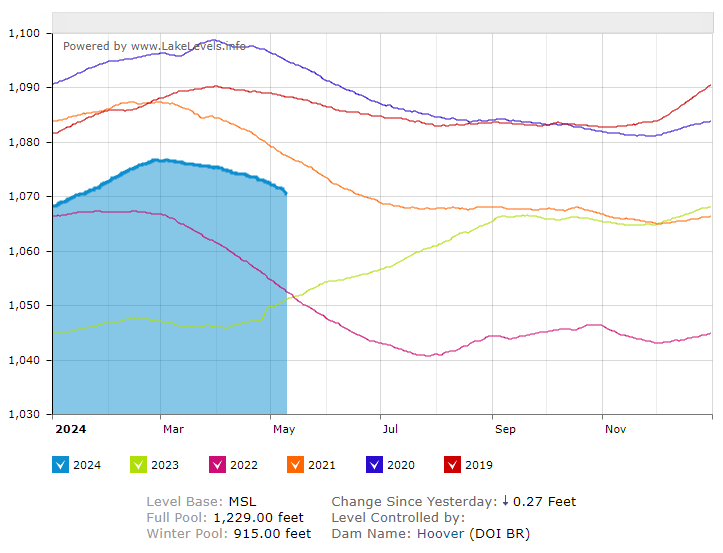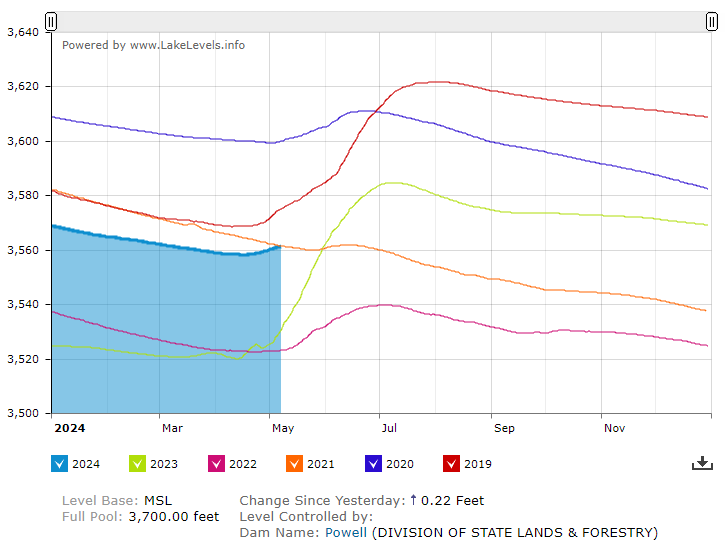Snowpack gets late-season boost from Colorado storms
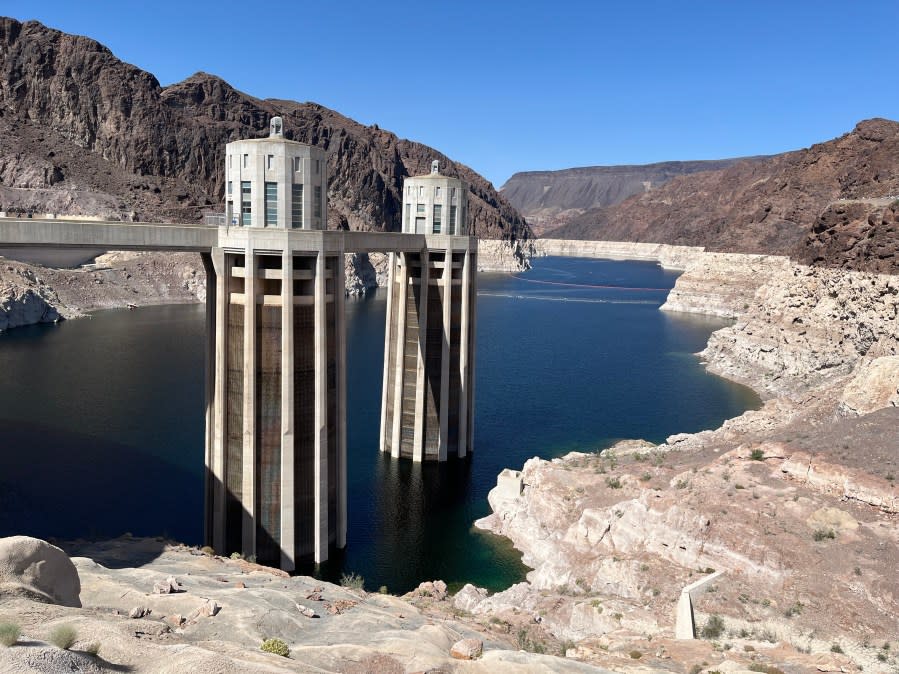
LAS VEGAS (KLAS) — A late-season bump from storms in the Colorado Rockies has boosted snowpack levels, helping the region rebound after levels fell below normal at the end of April.
That’s important for Las Vegas, which depends on the Colorado River for 90% of its water. Snowpack is currently at 107% of normal in the Upper Colorado River Basin, up from just 89% on May 1. On April 1, typically the peak for snowpack levels, data showed the amount of water stored in the snowpack at 111% of normal.
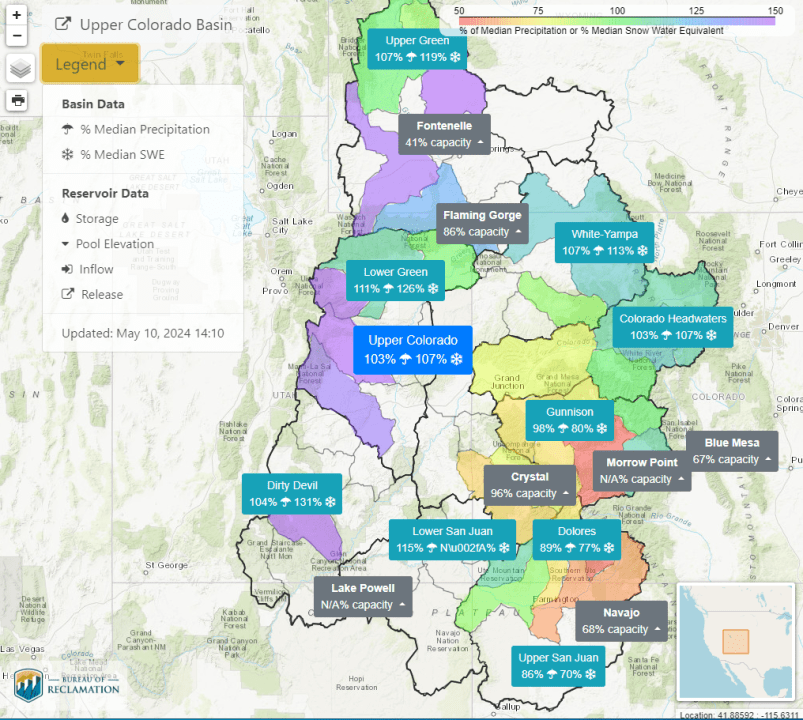
Separately, Northern Nevada counties got some good news as the U.S. Department of Agriculture said Lake Tahoe would fill for the first time since 2019. The Nevada Water Supply Outlook Report showed snowpacks in the eastern Sierra Nevada far above normal levels for the second consecutive year. Most key reservoirs in Northern Nevada are expected to fill this year.
The dramatic snow levels in the Sierra Nevada last year erased a two-decade megadrought in that region, according to a report by The Associated Press.
That won’t have any impact on Southern Nevada, where 90% of the water used comes from the Colorado River. The weather that has the greatest effect on the Las Vegas valley’s water supply happens hundreds of miles away.

Lake Mead had fallen to 35% of capacity as of Thursday, according to data from the U.S. Bureau of Reclamation. Water from snowmelt in parts of Colorado, New Mexico, Utah and Wyoming feeds the flow of the river as it makes its way to Lake Powell. From there, water flows down the Grand Canyon and into Lake Mead.
As snow melts during the warmer months, Reclamation will hold back as much as it can to build the level at Lake Powell. Officials have made that a priority to ensure hydropower production at Glen Canyon Dam. And Lake Mead will drop significantly in the process because the water has to keep flowing through Hoover Dam and downstream to Arizona and California.
Lake Mead as of Friday, May 10, 2024. Lake Powell as of Friday, May 10, 2024.
Currently, projections show Lake Powell will climb from 3,561 feet today to 3,587 feet by the end of July before it begins to drop; Lake Mead will drop from 1,070 feet today to 1,059 feet by the end of December.
In a conference call earlier this week, Seth Arens of the Western Water Assessment program said ground moisture improved from last year’s very wet winter (snowpack at 160% of normal), providing a needed break from drought. He said if there had been another year of drought, it could have produced dangerous conditions at Lake Powell.
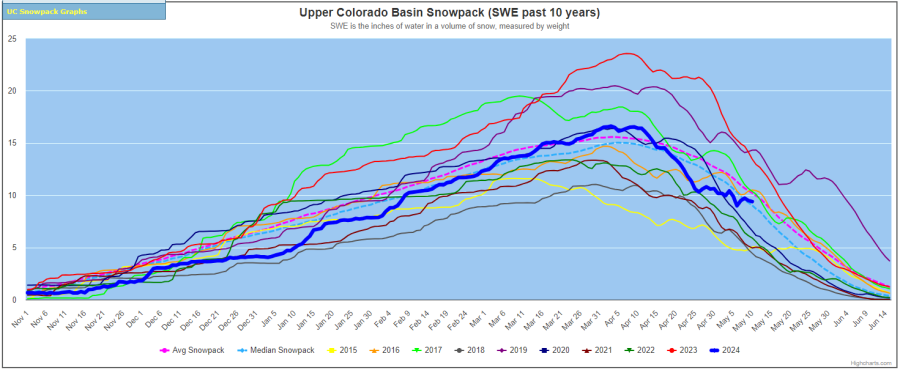
Last year improved ground moisture conditions in the Upper Colorado River Basin, he said.
Arens estimated it would take six or seven consecutive years like 1983 — the best water year on record — to completely refill Lake Powell and Lake Mead.
For the latest news, weather, sports, and streaming video, head to KLAS.
